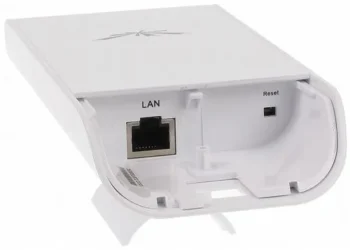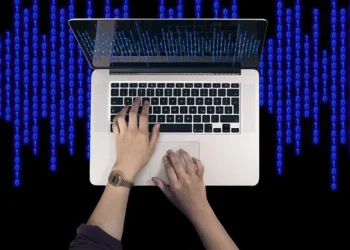In the age of laptops, smartphones, and portable drives, one small mistake can wipe out years of memories and work. Whether you’re a student at Kenyatta University losing your final-year project, a photographer whose memory card suddenly crashes after a wedding shoot in Nakuru, or a small business owner whose accounting data disappears after a Windows update — losing digital files can feel like a disaster.
We live in a digital-first Kenya. From eCitizen applications to mobile banking, school assignments to business invoices, data rules our daily lives. But here’s the truth: even the most careful users are just one crash away from data loss.
This is where data recovery software steps in — your invisible hero that digs deep into your devices and resurrects files you thought were gone forever.
Let’s break down how it all works, why it matters for every Kenyan user, and how you can protect your data before the worst happens.
💾 Understanding Data Loss: How It Happens
Before we talk about recovery, it’s important to know how data disappears in the first place. Most Kenyans experience at least one of these scenarios every year:
- Accidental deletion – That moment when you hit Shift + Delete and realize too late it wasn’t the Recycle Bin.
- Formatted drives – Maybe you were trying to clean a flash disk or SD card, only to realize you erased all your files.
- Corrupted storage – Common in external drives, memory cards, and phones used in dusty or humid areas.
- Power surges – Unstable electricity in homes and cybercafés can fry hard drives and motherboards.
- Malware or ransomware attacks – Increasingly common, especially from phishing links and cracked software downloads.
- System crashes and OS failures – A sudden blue screen or failed Windows update can lock your data away.
The result? Missing documents, unreadable photos, or drives that ask to be reformatted — basically, digital heartbreak.
🧠 How Data Recovery Software Actually Works
Here’s the surprising thing: when you delete a file, it doesn’t vanish immediately.
Your computer simply marks the space it occupied as “free,” meaning it can be overwritten in the future. The actual data remains hidden — invisible to the operating system, but recoverable with the right tools.
Data recovery software works by scanning your storage drive sector by sector to locate traces of deleted or corrupted files. Once identified, it reconstructs those files into readable formats.
Let’s break this process down step by step:
1. Scanning the Drive
When you open recovery software, you choose which drive or partition to scan — it could be your laptop SSD, external HDD, or even an SD card. The software then analyzes the disk structure, searching for file signatures (like .docx, .jpg, .mp4).
2. Identifying Recoverable Data
Files that haven’t been overwritten show up as “recoverable.” The program can detect hidden or unlinked data clusters that the operating system can’t see.
3. Rebuilding Files
After scanning, the tool reconstructs the files by piecing together data fragments. Think of it like assembling a digital jigsaw puzzle.
4. Previewing and Restoring
Modern tools let you preview your files — like photos or documents — before you decide to restore them. This ensures you only recover what matters.
5. Saving Recovered Data
Finally, the restored files are saved safely in a new location, ensuring you don’t overwrite existing data by mistake.
⚙️ Stellar Data Recovery: A Trusted Global Solution
One standout tool globally (and quite popular in Kenya’s tech community) is Stellar Data Recovery Professional.
It has a clean, user-friendly interface and supports recovery for almost every file type — from Microsoft Word documents to wedding videos and old photos.
Stellar works across Windows, Mac, and even external drives like USBs, SSDs, SD cards, and digital camera storage. It can even recover lost emails from Outlook and restore data from BitLocker-encrypted drives.
For instance, if your hard drive gets corrupted after a power outage in Nairobi or Mombasa, Stellar can still recover files even from an unbootable system. The software scans deep into the drive, identifies lost partitions, and brings your data back from the digital grave.
📸 Real-Life Scenarios Where Data Recovery Saves the Day
Let’s look at a few relatable Kenyan scenarios:
🏫 1. The Student’s Nightmare
Imagine you’re a final-year student at JKUAT, and your laptop suddenly freezes the night before your project submission. You restart, and the folder disappears. Panic sets in. A recovery tool can scan your drive and retrieve the missing Word and PDF files — saving your GPA and sanity.
💼 2. The Small Business Owner
A shop in Kisumu keeps daily records and invoices on an external drive. After a power surge, the drive refuses to open. Instead of starting from scratch, Stellar or similar recovery tools can restore the entire accounting folder in minutes.
📷 3. The Photographer
Wedding photographers and videographers in Kenya know the pain of SD card corruption. After a full shoot, a “card error” message appears. Recovery software can scan and rebuild JPEGs, RAW files, and videos — turning disaster into relief.
💻 4. The Cybercafé Operator
Public computers often face viruses from infected flash drives. When customer files go missing, a quick recovery scan can retrieve them — maintaining trust and service reputation.
🔐 Security and Data Integrity in Recovery
You might wonder — is it safe to use recovery software?
Yes, as long as you use a verified, reputable program. Trusted solutions like Stellar use read-only algorithms, which means they don’t modify your data; they just copy and rebuild it.
However, beware of free or cracked versions floating around the internet — especially from random Telegram or WhatsApp groups. These can carry malware that steals your personal data instead of saving it.
Always download directly from the developer’s official website or authorized distributors.
🧰 Key Features to Look For in a Recovery Tool
If you’re comparing different recovery solutions, here are must-have features for Kenyan users:
- ✅ Support for multiple file types (documents, photos, videos, emails)
- ✅ Recovery from internal and external drives
- ✅ Preview before restoring files
- ✅ Encrypted drive and BitLocker recovery
- ✅ Pause-and-resume scans
- ✅ Compatibility with both Windows and Mac
- ✅ ISO certification or trusted brand reputation
These ensure you’re using software that won’t worsen the situation.
☁️ The Importance of Regular Backups
While recovery software is a lifesaver, prevention is better than restoration. Kenyans are increasingly moving digital, but few back up their files regularly.
Here’s a smart backup plan that works even in low-resource settings:
- Use Cloud Storage – Google Drive, OneDrive, or Dropbox offer free space for crucial documents.
- External Drives – Keep an external HDD or SSD just for backups.
- Flash Drives for Fast Copies – Cheap and practical for schools or small businesses.
- Automated Backup Software – Many tools automatically copy data daily or weekly.
The rule of thumb?
Always keep three copies of your important files — one on your computer, one on an external device, and one in the cloud.
🧮 Why Data Recovery Matters in Kenya’s Digital Economy
Kenya’s economy is fast digitizing. From online learning to mobile money, data is the new currency.
Losing it can mean losing opportunities.
- Students lose years of work.
- Businesses lose client databases and invoices.
- NGOs lose project reports and donor records.
- Creatives lose entire photo albums and videos.
With more Kenyans relying on digital tools, understanding how to protect — and recover — data is no longer optional. It’s essential digital literacy.
🧠 Expert Tips for Preventing Future Data Loss
- Invest in a surge protector – Protect your devices from unstable electricity.
- Keep antivirus software updated – Prevent malware and ransomware infections.
- Avoid cheap storage drives – They tend to fail faster.
- Don’t save everything on your desktop – Keep files organized in folders and cloud sync enabled.
- Run regular disk checks – Identify and repair bad sectors early.
Small habits go a long way in saving you from big data disasters.
🌍 The Future of Data Recovery in Kenya
The next generation of recovery tools will rely heavily on AI (Artificial Intelligence) and machine learning.
Imagine software that predicts data failure before it happens, alerts you, and automatically backs up files.
As Kenya continues leading Africa in innovation — from M-Pesa to government digitization — local businesses are now integrating data recovery as part of cybersecurity and IT management.
Soon, we’ll see cloud-based recovery systems that protect even M-Pesa statements, digital receipts, and online business records automatically.
🧩 Final Thoughts: Don’t Wait for Disaster
If your files are gone, hope isn’t.
Data recovery tools like Stellar have made it possible for Kenyans to retrieve lost memories, documents, and records from the ashes of digital accidents.
But the smartest move is to prepare.
Backup your files today, secure your devices, and learn how recovery works. Because in today’s digital Kenya, losing data is easy — but recovering it is easier when you know what to do.





































